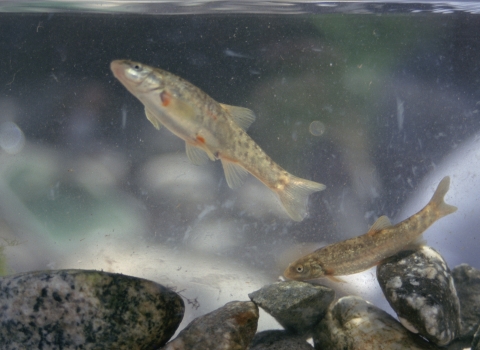Walk, run or stroll in nature during National Wildlife Refuge Week, October 9-15, 2022. Enjoy great outdoor recreation in the nation’s largest network of public lands dedicated to wildlife conservation, the National Wildlife Refuge System, managed by the U.S. Fish and Wildlife Service. Founded in 1903, national wildlife refuges offer access to a host of popular activities while providing vital habitat for thousands of wildlife species.
“Conserving wildlife habitat and improving recreation access to public lands are key goals of the Biden-Harris administration’s America the Beautiful initiative,” said Service Director Martha Williams. “National Wildlife Refuge Week is a great time for Americans to take pride in our rich wildlife heritage and discover the recreation and scenic wonders awaiting them at national wildlife refuges.”
America the Beautiful is a decade-long challenge to pursue a locally led and voluntary, nationwide effort to conserve, connect, and restore the lands, waters and wildlife upon which we all depend.
National Wildlife Refuge Week occurs yearly during the second full week of October. The week of celebrations will kick off on Saturday, October 8, with Urban Wildlife Conservation Day. Admission is free on Sunday, October 9 at wildlife refuges that normally charge an entrance fee. Nearly 500 national wildlife refuges and wetland management districts offer free admission year-round.
This year, the Refuge System is partnering with the Public Lands Alliance to celebrate our commitments to deepening human connections with nature. As part of Refuge Week, the Service is encouraging people to get out in nature for good health and to help wildlife thrive. Over 30, free, self-guided 5K “Walk for the Wild” events around the country will highlight national wildlife refuges.
The Refuge System offers many healthful outdoor activities including fishing, wildlife viewing and wildlife photography while providing vital habitat for thousands of wildlife species, including sandhill cranes, American alligators, bison, and sea turtles. This year’s Refuge Week theme is: “Find refuge in nature. Join us on our mission to make sure wildlife and humans thrive.”
The Refuge System helps many species recover and thrive:
About 340 California condors fly free today, thanks to efforts by Hopper Mountain National Wildlife Refuge, Bitter Creek National Wildlife Refuge and many committed partners. In 1982, there were just 22 known condors in the wild.
Refuge-led tidal marsh restorations in San Francisco Bay in California and Willapa Bay in Washington are providing new feeding and rearing areas for salmon and migratory birds, while also protecting nearby communities.
The Refuge System is an unparalleled wildlife conservation network of 568 national wildlife refuges and 38 wetland management districts. There is a national wildlife refuge national wildlife refuge
A national wildlife refuge is typically a contiguous area of land and water managed by the U.S. Fish and Wildlife Service for the conservation and, where appropriate, restoration of fish, wildlife and plant resources and their habitats for the benefit of present and future generations of Americans.
Learn more about national wildlife refuge within an hour’s drive of most major metropolitan areas, almost all offering free admittance year-round. National wildlife refuges provide vital habitat for thousands of species and access to world-class recreation, from fishing, hunting and boating to nature watching, photography and environmental education.
National wildlife refuges contribute $3.2 billion per year into local economies and support more than 41,000 jobs, according to the Service’s report Banking on Nature. Visits to refuges have doubled in the last 10 years, reaching nearly 65 million visits in 2021. National wildlife refuges also make life better by conserving wildlife, protecting against erosion and flooding and purifying our air and water.
More than 101 million Americans – 40 percent of the U.S. population age 16 and older – pursue wildlife-related recreation, including hunting, fishing and wildlife watching.
Learn more about this year’s celebration, including virtual and in-person events by visiting: https://fws.gov/events.



